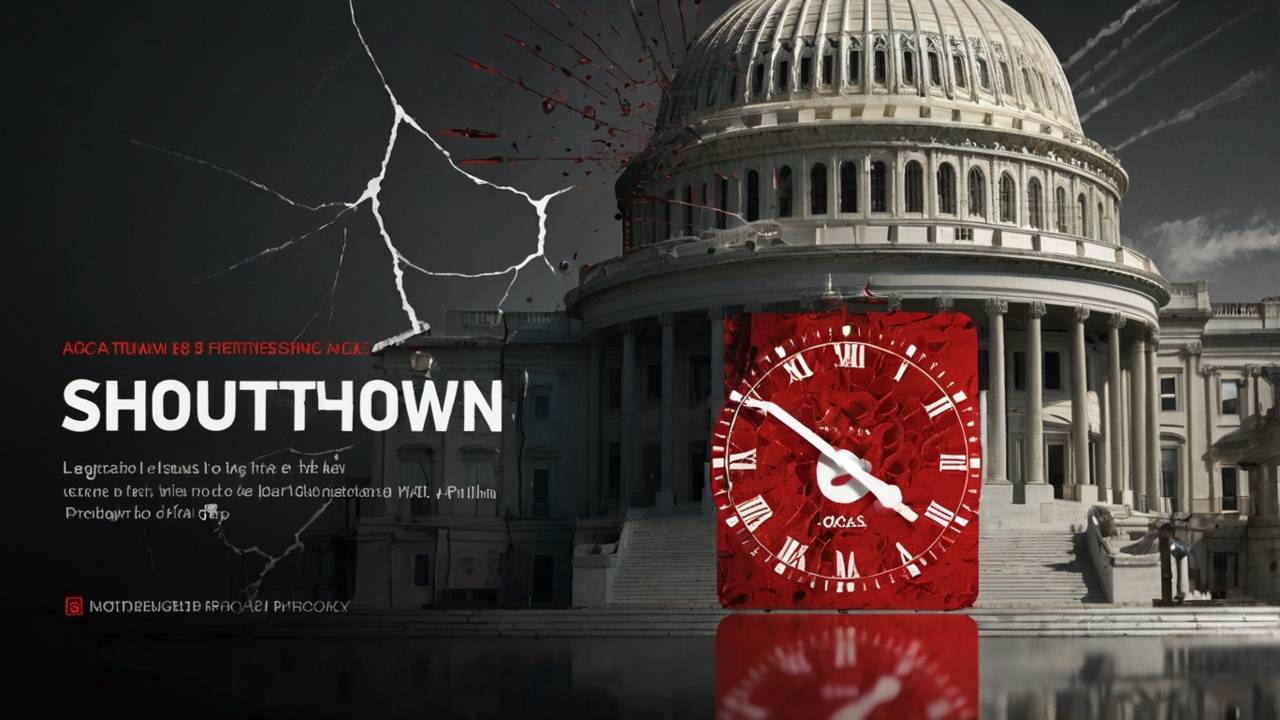Shutdown Fight Over Obamacare: Unveiling Health Care Flaws
The Stakes of the Current Shutdown Showdown
As of late September 2025, Washington is gripped by a familiar tension: a potential government shutdown looms by October 1. At the heart of this crisis is the Affordable Care Act (ACA), or Obamacare, with Democrats and Republicans clashing over its future. The debate centers on enhanced premium subsidies set to expire at year’s end, a lifeline that has driven record enrollment but now exposes a key weakness in the law’s design.
Democrats, led by key figures, are holding firm, demanding an extension of these subsidies and a reversal of recent Medicaid cuts in any funding bill. Republicans, with their slim majorities, see this as a political ploy and push for a clean continuing resolution (CR). The outcome will affect millions, from small business owners to early retirees, highlighting affordability issues baked into Obamacare from the start.
What’s Driving the Shutdown Threat?
The deadline is midnight on September 30, with a shutdown risking furloughs and service disruptions. The enhanced subsidies, introduced in 2021 and extended to 2025, have capped premiums at 8.5% of income for a wider range of households, boosting enrollment to 24 million. Without renewal, premiums could jump 75% for many, potentially leaving 4 million uninsured in 2026.
This echoes the 2013 shutdown, when Republicans fought to defund Obamacare’s rollout. Today, the roles flip—Democrats defend expansions Republicans quietly trimmed in a July tax bill. The tension underscores a deeper flaw: the ACA’s original subsidies struggled to make coverage truly affordable for middle-income families.
For a broader health policy view, CDC guidance for COVID-19 vaccine packs shows how pandemic measures shaped ACA growth.
Mayo Clinic offers insights into ACA’s evolution.
The Role of Enhanced Subsidies
Before 2021, ACA subsidies helped lower- and middle-income families but stopped at 400% of the federal poverty level (FPL)—$58,320 for an individual or $120,000 for a family of four in 2025. This left many facing full premiums, often exceeding $1,000 monthly, leading to underinsurance.
The American Rescue Plan’s enhancements removed this cap, extending aid to households earning up to $150,000 for a family. Out-of-pocket costs dropped, and uninsured rates fell to 8% from 16% in 2010. Insurers benefited too, with healthier enrollees stabilizing risk pools and keeping premiums 10-20% lower than expected.
Without clarity by mid-October, when rates are set, insurers may hike 2026 costs, deterring sign-ups. This ties to mental health access issues in extended mental health clinic bridging the gap in modern care.
Healthline tracks enrollment trends.
The Affordability Flaw Exposed
The shutdown fight reveals Obamacare’s Achilles’ heel: its subsidies were a compromise, not a cure. Designed to pass a divided Congress, they left middle-income families vulnerable. A family earning $60,000 pre-2021 paid full rates, causing “churn” as incomes fluctuated.
Post-2021, affordability soared, with 45% of enrollees identifying as Republicans or MAGA supporters—ironic given GOP resistance. Critics like Rep. Chip Roy call the $400 billion cost a bailout for “higher earners,” though most aid targets those under 200% FPL. Health economists argue the private-insurer model, absent a public option, drives these gaps.
The Urban Institute warns of $32 billion in uncompensated care costs if subsidies lapse. For workplace wellness amid uncertainty, five tips for improving employee well-being in the workplace offers coping ideas.
KFF analyzes small business impacts.
Who Bears the Brunt of a Shutdown?
A shutdown would furlough federal workers, close parks, and delay SNAP benefits, echoing 2013’s chaos. Obamacare’s Marketplace runs on separate funds, but uncertainty hits enrollment hard. Starting November 1, shoppers could face sticker shock without subsidy news.
Rural areas, reliant on Marketplace plans, risk 20% enrollment drops. Early retirees and gig workers face coverage gaps. July’s $100 billion Medicaid cut—another Democratic demand—threatens gains for low-income families.
Public health suffers too; Wayne County alert invasive Asian mosquito risks prevention notes how shutdowns disrupt surveillance.
CDC outlines ACA’s public health role.
Political Shifts and Strategies
Unlike 2013’s GOP-led shutdown to block Obamacare, 2025 sees Democrats leveraging its popularity. With GOP voters benefiting, moderates like Sen. Thom Tillis fear backlash from premium hikes. Hardliners resist, citing fiscal concerns.
President Trump’s canceled meeting with Democrats raised stakes, though private hints suggest subsidy support. Bipartisan talks may emerge post-Rosh Hashanah, but time’s tight.
For global health context, America first global health strategy initiatives reflects U.S. policy focus.
Politico updates negotiations.
Economic and Health Care Fallout
Losing subsidies could cost $50 billion yearly in productivity from untreated conditions. Hospitals, especially rural ones, brace for uncompensated care spikes. Insurers warn of market instability, potentially raising employer plan costs.
Long-term, this fuels reform calls—permanent subsidies or a public option. A shutdown delays fixes, eroding trust. For nutrition’s preventive role, how much fruit and vegetables should you eat daily for optimal health ties to cost savings.
Possible Outcomes and Next Steps
Three paths emerge:
- Agreement: A CR with subsidy extension passes, delaying deeper debates to 2026.
- Brief Shutdown: A weekend closure, like 2018, forces compromise.
- Long Standoff: Midterm politics dominate, risking worse cuts.
Experts urge action by October 15 for rate-setting. The SUPPORT Act proposes permanent enhancements.
Real Voices from the Affected
Maria Lopez, a Florida small business owner, says subsidies saved her family from financial ruin. Tom Reilly, an Ohio retiree, dreads an $800 monthly hike: “This D.C. fight is my health at stake.”
These stories press lawmakers to act. See mental health links in GLP-1 and CVD mental health disorders dementia risks explored.
Conclusion: A Call to Address the Flaw
The 2025 shutdown fight isn’t just politics—it’s a chance to fix Obamacare’s affordability gap. Enhanced subsidies masked the issue, but their expiration demands action. With 24 million relying on them, extending them is essential, not optional.
As September 29 ends, compromise could still prevail. Americans deserve health care that lasts, not one held hostage. Lawmakers: Resolve this now.
